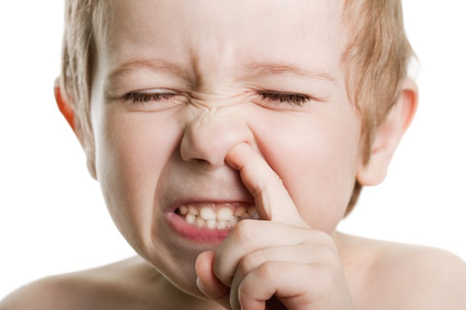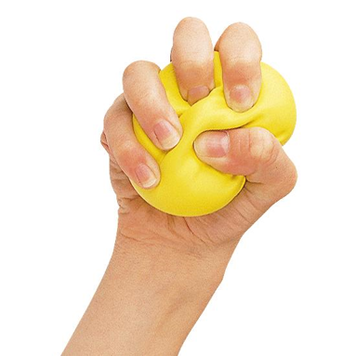Self-Soothing in Children and Adolescents. Is it More Than Just “a Habit” or “Unwanted Behaviour”?
by Kaelan Jones, Provisional Psychologist - BPsych (Hons) MProfPsyc
January 2020
by Kaelan Jones, Provisional Psychologist - BPsych (Hons) MProfPsyc
January 2020
What is self-soothing?
“Self-soothing” refers to any behaviour an individual uses to regulate their emotional state by themselves. Self-soothing behaviours are often developed in the early years of life, are repetitive/habitual in nature, and are often viewed by a child or adolescent as calming or comforting. Self-soothing behaviours are identifiable across the lifespan. It is not uncommon for adults to continue to engage in the self-soothing behaviours they developed during childhood, however, many of these behaviours do diminish with time and self-awareness. Although self-soothing is a life skill that can be very important for emotional wellbeing, some self-soothing behaviours that a child or adolescent might be engaging in may be considered socially inappropriate for their age or self-injurious
Common self-soothing behaviours found in children and adolescents

- Thumb-sucking
- Fingernail biting
- Cuticle picking
- Sucking on clothing or other objects
- Rocking
- Knuckle cracking
- Pulling hair, eyebrows, or eyelashes
- Hair twirling
- Picking nose or skin
- Head banging
- Biting the ends of pencils or other objects
- Masturbation
- Alcohol/drug experimentation
- Self-harm (e.g. cutting):
Common reasons for why a child or adolescent might be engaging in self-soothing behaviours
- Trouble coping with or understanding their emotions
- Stress, which can be brought on by change (e.g. parental separation, school transition) or challenges (e.g. peer conflict, study/exams)
- Current or previous exposure to trauma
- Attachment issues – children with inconsistent care during their early years of life (e.g. the first three years) learn to rely on themselves for care
- Sensory seeking
- Tic Disorder – Tics are brief, sudden, repetitive, and stereotyped movements or sounds, and are not uncommon amongst school-aged children. On average, Tics generally become apparent at 6 to 7 years of age, peak around 10 to 12 years of age. The behaviour could be due to a Tic Disorder, and if persisting for more than 12 months, it is recommended that the behaviour be looked at by a professional.
What can be done to support a child or adolescent in adopting different, more appropriate, or less injurious methods of self-soothing?
- Try to ignore the behaviour. Whilst the behaviour might be irritating or considered inappropriate, generally the behaviour will disappear over time as the child gets older and comes to understand and cope with their emotions. Sometimes, when attention is given to the behaviour, particularly negative attention such as punishment or ridicule, the tension that the behaviour relieves will likely increase, and in turn increase the behaviour without conscious awareness. Therefore, paying attention to the behaviour can reinforce the behaviour.
- Observe the behaviour to better understand its purpose. For instance, when are they engaging in the self-soothing behaviour? Is the behaviour occurring when they are bored, tired, anxious, or hungry etc.? Once the triggers of the self-soothing behaviour are identified, we can try to remove or lessen the impact of the trigger.
- Approach your child with understanding and without judgement of their behaviour.
- Be physically and emotionally present with your child. Assist them to identify and verbalise their feelings, and together work out what they need in terms of support.
- Positive reinforcement is recognised as a successful way to produce a change in or prevent a behaviour. When you notice that your child is not engaging in the behaviour for extended periods of time, a small reward can be given. You can also reward the new behaviour that you want to see adopted by your child. For younger children, star charts can be helpful. For older children, daily monitoring of behaviours with a behavioural diary can be helpful.
- Role model effective, appropriate, and non-injurious self-soothing behaviours for your child or adolescent. How you cope with stressors will influence how your child learns to cope with stressors. When you feel overwhelmed you can say something like “I have so much to get done today that I don’t know how I am going to do it all! I think I am going to need a minute to do my deep breathing, and then I will feel better.” This will demonstrate to your child that you have acknowledged your stress by putting it into words and have responded to it in an effective way.
- Redirect your child to a more appropriate behaviour each time they engage in the inappropriate one. For example, if they are nose picking, redirect them towards playing with a fidget object, or if they are self-harming redirect them to flicking an elastic band against their wrist.
- Encourage your child to engage in activities that allow for sensory stimulation and the release of any tension or nervous energy (e.g. team sports, jumping, running, boxing)
Why we may need to replace some self-soothing behaviours:
If the current self-soothing behaviour that the child or adolescent is engaging in is causing serious injury (e.g. cutting wrists, head banging), is socially inappropriate for the context (e.g. masturbation, picking nose), or is detrimental to their physical and/or mental health (e.g. excessive alcohol and other drug use), then ideally we want to replace the behaviour with something that is less injurious, socially appropriate, and positive for their overall health. When the current self-soothing behaviours are causing significant harm to the child or adolescent, they should not be ignored. To introduce a replacement self-soothing behaviour, invite your child or adolescent to sit down with you to discuss your concerns about their current behaviour without judgement, punishment, or ridicule. Suggest a range of replacement behaviours to trial, and let them know that they have your support as they trial new behaviours to find something that is right for them (e.g. offering to do a daily walk with them or offering to take them out shopping to find a fidget object).
Self-soothing behaviours to replace current inappropriate or injurious self-soothing behaviours

- Squeezing a stress ball
- Cuddling a soft toy
- Playing with a pet
- Fidget objects – e.g. rings, bracelets, spinners
- Flicking elastic band against wrist
- Listening to music
- Going for a walk
- Having a warm bubble bath
- Hitting a punching bag
- Talking about feelings
- Mindfulness/meditation – refer to the following apps and podcasts:
Peace Out: https://bedtime.fm/peaceout
Smiling Mind: https://www.smilingmind.com.au/
Sources
https://lifelinechild.org/self-soothing/
https://blogs.psychcentral.com/childhood-neglect/2018/05/how-to-learn-the-skill-for-a-lifetime-self-soothing/
https://www.healthychildren.org/English/family-life/family-dynamics/communication-discipline/Pages/Common-Childhood-Habits.aspx
https://childrensmd.org/uncategorized/kids-tics-whats-normal-see-specialist/
https://lifelinechild.org/self-soothing/
https://blogs.psychcentral.com/childhood-neglect/2018/05/how-to-learn-the-skill-for-a-lifetime-self-soothing/
https://www.healthychildren.org/English/family-life/family-dynamics/communication-discipline/Pages/Common-Childhood-Habits.aspx
https://childrensmd.org/uncategorized/kids-tics-whats-normal-see-specialist/
